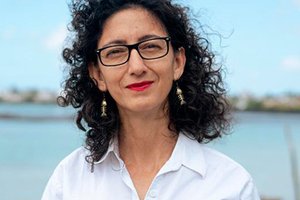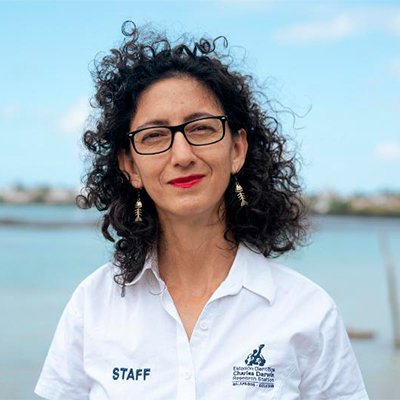
Hypathia, Marie Skłodowska-Curie, Jane Goodal, Elinor Orstrom, and more recently Sylvia Earle, are names who resonate in the scientific community as major characters in the scientific development, around the world. These women have been figures for decades, even centuries. The role women play in science, however, has not always been as prominent as it is today. Early on, women were not allowed, neither promoted nor valued at scientific environments where the dominance of male scientists, was the standard.
In Ecuador, Matilde Hidalgo was the first woman to finish her high school in 1913, graduating from university and receiving a Doctoral Degree in Medicine (she specialized in pediatric, neurology and dietetics in 1921). Matilde was the first woman in Latin America to be given the right to vote (1924).
Fortunately, in the last decades, the involvement of women in science and science- related areas and actions has increased. With a substantial growth in the ratio of women getting university degrees globally. This situation has also occurred in Ecuador, a country where in 2014, 55.5% of the registered students in universities were women (Senescyt 2015). Yet, there still is are low numbers of women actually finishing their careers.
In Galapagos, there began a change in the early 1970s, when women involved with scientific activities, arrived at the islands to conduct relevant and well- positioned research projects within the Galapagos, within the scientific circles, at global scale.
An example of this trend are women like Rosemary Grant (1970s), Jeannine Lanier (1977), Elizabeth Tindle (1978), Krisztina Trillmich (1979), Eugenia del Pino and Sylvia A. Harcourt (1980) and later Heidy Snell (1989). They, through important scientific work, planted the seed of women scientists in Galapagos and who looked at varied disciplines and interesting scientific inquiries in the islands, some of which last until today.
The Charles Darwin Foundation (CDF) and its Research Station has shown that in the last twenty years, an important transition has occurred where once it was a fully male- dominated institution in the scientific dimension since its creation in 1959 and 1964, respectively, (the first women scientist publishing in the Galapagos Research was in 1977) to be an institution with 55% of the staff being women in 2020. This result not only illustrates a dynamic trend in the scientific activities, but also the inclusion of more women in the administrative and operational areas of CDF. This achievement demonstrates that, contrary to the tendency shown by science and science-based institutions globally, the CDF fosters the active involvement and engagement of women in science and no science areas in the institution.
Importantly, within varied science and academic circles, the presence of women, still continues to be underrepresented. this especially in some specific scientific disciplines, like the so-called STEM (Science, Technology, Engineering and Mathematics). The direct consequence of the limited number of women pursuing academic and professional careers in science, is that the gender unbalance causes that fifty percent of the professional and human talent is at a lost.
At the end, the resultant scenario is the great loss in the development and advance of these sciences, and therefore the likeliness to successfully address the needs of the society facing future challenges and complex situations, is lower.
The blog “Women in science at CDF” will feature stories of varied women working in science, within diverse disciplines and within different teams and areas at the CDF. The great capacity and talent of these women are applying to conduct their work is abundant and greatly contributes to the successful achievement of the research objectives we pursue, together with our male colleagues. Along with these achievements, the CDF is proud to be one Galapagos based institution where the equal involvement of professionals, is an institutional regular practice, to ensure the gender balance.
The last years, the CDF has been also promoting the professional career development of young women-Galapagos permanent residents who will start their graduate studies program, thanks to scholarships obtained at participating in CDF research projects. CDF has also been fostering, within girls and young women generations in the archipelago, the idea that, regardless whether women or men every person is able to pursue their dreams. This requires a paradigm shift at educating and teaching children, by parents, families and educators. When demonstrating that science careers are for anyone who wants to pursue them. The key message is to motivate girls to be included in science fields and to make visible women referential models, working in varied and diverse disciplines, for all of us to live in an equitable, fair and inclusive environment.
Matilde was the first woman in Latin America to be given the right to vote (1924).
-ENDS-






